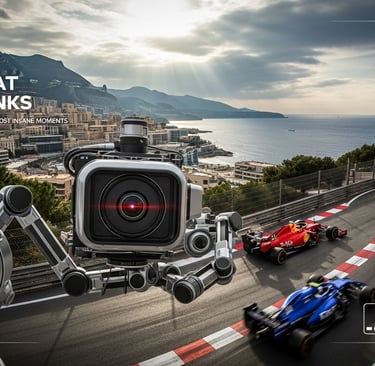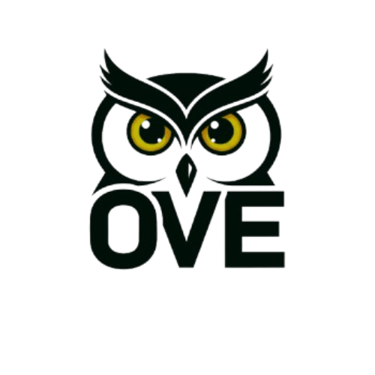The AI That Never Blinks: How Robots Are Capturing F1's Most Insane Moments
Suppose you're watching Lewis Hamilton rocket down the Monza straight at 230 mph, and somehow the camera follows him perfectly – no shaky footage, no losing focus, just buttery smooth tracking that makes you feel like you're floating right beside his Mercedes. That's not a human camera operator pulling off some superhuman feat. That's artificial intelligence, and it's quietly revolutionizing how we watch the most thrilling sport on the planet.
SPORTSARTIFICIAL INTELLIGENCEPHYSICSINNOVATIONTECHNOLOGY
Hitanshu Soni
7/16/20255 min read


The Problem We Never Really Thought About
Here's something that'll blow your mind: traditional camera operators literally cannot keep up with modern F1 cars. I mean, think about it – these machines are doing 200+ mph, changing direction in milliseconds, and human reflexes just... can't. Our brains process visual information at about 24 frames per second, but these cars are moving so fast that by the time we see them, they're already somewhere else entirely.
I remember watching old F1 footage from the 90s and always wondering why the cameras seemed so jittery during the really exciting bits. Turns out, it wasn't the camera operators being bad at their jobs – they were just being human. And humans, as amazing as we are, have limits.
Enter the AI Revolution (And It's Actually Pretty Cool)
So here's where things get interesting. Someone had the brilliant idea to teach computers how to watch racing. Not just record it, but actually understand what's happening and predict what's about to happen. It sounds like science fiction, but it's very much science fact.
These AI camera systems are like having a crystal ball that can see a few seconds into the future. When Max Verstappen is approaching a corner at 320 kph, the AI has already run the calculations – his speed, the track conditions, his car's telemetry data – and positioned the cameras exactly where they need to be for the perfect shot.
What really gets me excited is how these systems learn. They've watched thousands of hours of racing footage, picking up on patterns that even seasoned directors might miss. They can spot the subtle signs that a driver is pushing too hard, or that an overtake is about to happen, or that someone's about to make a mistake. It's like having a racing expert with superhuman reflexes controlling every camera.
The Technical Stuff (Don't Worry, I'll Keep It Simple)
Okay, so how does this actually work? Imagine your brain, but processing information at 60 frames per second instead of 24. That's essentially what these AI cameras are doing. They're analyzing every single frame for things like:
Where objects are moving
How fast they're moving
Where they're likely to be in the next split second
What the most visually interesting part of the frame is
The really clever bit is that these cameras aren't working alone. They're plugged into the race's timing system, so they know exactly what's happening with every car on track. If the data shows that two cars are closing in on each other, the AI automatically knows "Hey, this is about to get interesting" and focuses on that battle.
And here's something that sounds almost too futuristic to be real: these systems have what engineers call "emotional intelligence." They can actually recognize when something looks dramatic or exciting. A car sliding at the limit, wheel-to-wheel action developing, rain starting to fall – the AI spots these moments and makes sure we don't miss them.
What This Means for Us Viewers
The difference is night and day. Gone are those frustrating moments where the camera loses the car just as something exciting happens. Instead, we get these impossibly smooth shots that seem to anticipate every move. It's like the camera operator has become psychic.
But it's not just about pretty pictures. These AI systems are making racing safer too. When there's an incident, the AI can instantly pull up multiple camera angles and highlight potential safety issues. What used to take stewards several minutes to analyze can now be done in seconds.
I've noticed that races just feel more immersive now. The cameras seem to know exactly when to pull back for the big picture and when to zoom in for the intensity. It's like having the world's best TV director, except this director never blinks, never gets tired, and processes information faster than any human ever could.
It's Not Just F1 Anymore
This technology is spreading like wildfire across all kinds of sports. MotoGP is using it to track those insane lean angles that riders achieve (seriously, how do they not fall off?). NASCAR has AI cameras that can automatically spot the most competitive battles in a 40-car field. Even Formula E is using it to make electric racing more visually exciting.
But here's what's really cool – it's jumping beyond motorsports entirely. Olympic sprinters are now followed by AI cameras that can track their form and speed with incredible precision. Tennis matches use this tech to capture serve speeds and ball trajectories that would be impossible to follow manually.
What's Coming Next Will Blow Your Mind
The stuff in development right now sounds like something out of a sci-fi movie. We're talking about:
Virtual Reality Experiences: Imagine sitting in the cockpit with your favorite driver, or floating above the track watching the race unfold beneath you. AI cameras are making this possible by creating detailed 3D maps of the action.
Instant Highlight Reels: AI that can automatically create highlight packages in real-time, picking out the best moments and packaging them for social media before the race is even over.
Superhuman Analysis: Systems that can break down racing techniques in ways that would take human experts hours to analyze, showing us exactly what separates the champions from everyone else.
Humans Still Matter (Thank Goodness)
Before you start worrying about robots taking over everything, let me reassure you – humans are still very much in charge of the creative side. The AI handles the impossible task of tracking cars moving at superhuman speeds, but people still decide how to tell the story, what narrative to focus on, and how to capture the emotion and drama that makes racing so compelling.
It's actually a perfect partnership. The AI provides the precision and superhuman reflexes, while humans bring the creativity, intuition, and understanding of what makes good television. The result is coverage that's technically perfect but still emotionally engaging.
The Bottom Line
Look, I've been watching F1 for years, and I can honestly say that the viewing experience has never been better. These AI cameras have solved problems I didn't even know existed, and they're making the sport more accessible and exciting for everyone.
We're living in an age where technology is enhancing human achievement rather than replacing it. The drivers are still the stars, pushing themselves and their machines to the absolute limit. But now, thanks to AI, we can experience every moment of that human drama with a clarity and precision that would have been impossible just a few years ago.
The future of racing is faster, more competitive, and more thrilling than ever. And thanks to these incredibly smart cameras, we're guaranteed front-row seats to all of it. Pretty amazing when you think about it, right?


Hitanshu Soni
Software Developer Engineer at SportVot
